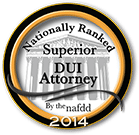When you experience a slip and fall incident, it might seem like a simple accident, but it can have serious consequences. In Virginia, slip and fall incidents often result in painful injuries that require medical attention and could lead to financial challenges. While these incidents can happen almost anywhere, such as in a grocery store, a mall, or even on a public sidewalk, the steps you take immediately afterward are crucial for your recovery and for any legal process that may follow. Gathering evidence is one of the most important things to do after a slip and fall, as it can help you prove what happened and support any claim you may need to file for compensation. This process may seem challenging, but it becomes much simpler with a basic understanding of what evidence is essential and why it matters. At, NovaLegalGroup, P.C. , we are here to guide you through the legal process and help you navigate the complexities of your case.

Why Gathering Evidence Matters in a Slip and Fall Case
The moments after a slip and fall can be confusing and stressful, but they are also the time when valuable evidence can be collected. Evidence can include everything from photos of the scene to witness statements, and each piece plays a role in creating a clear picture of what happened. In a Virginia slip and fall case, you must prove that someone else, like a property owner or manager, was responsible for the conditions that led to your fall. This is where evidence comes in. It helps show that your injuries were caused by specific unsafe conditions that the property owner or someone responsible for the property should have corrected. If you are unable to show that the property owner was negligent, it can be very difficult to obtain compensation for your injuries.
In Virginia, laws related to slip and fall incidents often require that the injured person prove the property owner’s responsibility for unsafe conditions. This means showing that the owner knew about the hazard or should have known and had enough time to address it. Evidence gathered right after the incident can help support this claim. Without strong evidence, insurance companies and courts may dismiss your case or deny your claim, which can leave you with medical bills and other costs related to the injury.
Photographs of the Scene
One of the first things to do after a slip and fall is to take photographs of the location where you fell. These photos should focus on the specific area and anything that contributed to your fall, like a wet floor, uneven surface, torn carpet, or poor lighting. Taking photos from multiple angles helps provide a complete view of the scene. This visual evidence is important because conditions can change quickly, especially if the property owner tries to fix the problem right after the incident. The photos serve as proof of the conditions as they were at the time you were injured.
In addition to taking pictures of the hazardous condition, it is also helpful to capture any signs or warnings, or lack thereof, around the area. For instance, if there was a wet floor without a caution sign, this might indicate negligence. By documenting these details, you provide support for your claim, showing that the property owner did not take necessary steps to prevent accidents.
Gathering Witness Statements to Strengthen Your Claim
If there were any witnesses to your slip and fall, getting their contact information and asking them for a statement can greatly help your case. Witnesses can provide a neutral account of what happened and describe the conditions that led to your fall. Their statements are often valuable because they can confirm details you may provide about the incident. Witnesses might have seen you slip on a wet floor or may remember seeing no caution signs in place. Their perspectives help strengthen your claim by offering an unbiased view of the circumstances.
Talking to witnesses soon after the incident is essential, as their memory of the event may fade over time. If possible, ask them to write down their observations, as having their thoughts in writing can be useful if they are asked to recall events in the future. A reliable witness can make a significant difference in proving the responsibility of the property owner, showing that there was a dangerous condition that caused your injury.
Documenting Injuries and Medical Treatment
Documenting your injuries is another essential step in gathering evidence. Immediately after a slip and fall, it is common to feel shaken and perhaps even embarrassed, which may lead you to downplay your injuries. However, documenting every injury, no matter how small it seems, is crucial for your claim. Seek medical attention as soon as possible after the incident, even if you think your injuries are minor. A doctor can provide a professional assessment and keep records of your injuries and the treatment you need. Medical records not only demonstrate the extent of your injuries but also link them directly to the slip and fall incident.
These records become vital in showing the severity of your injuries and the impact they have had on your life. They can also help demonstrate the cost of medical treatment and any long-term consequences, such as the need for ongoing therapy or other healthcare expenses. Having a clear record of your injuries helps show the harm that resulted from the incident and can support your claim for compensation.
Keeping a Personal Record of the Incident
Writing down your own account of the incident as soon as possible is another helpful way to gather evidence. This account can include details like the time and date of the fall, where it occurred, and how you felt both physically and emotionally. Recording these details while they are fresh in your memory provides a clear and consistent story of what happened. In addition to writing about the fall itself, note any interactions you had with property staff or anyone responsible for the area. If a property manager spoke with you or offered to help, these details can also become part of your case. Your personal record can serve as a valuable tool if your case goes to court, as it will show the timeline of events and the immediate effects of the fall.
Choosing a Personal Injury Attorney Personal Injury Case TimelineRelated Videos
Understanding the Role of Surveillance Footage
Many public areas, businesses, and stores have security cameras that record activities. After a slip and fall, you may be able to request access to any surveillance footage that shows the incident. This footage can be incredibly valuable because it provides an unbiased account of what happened, including the condition of the area at the time of the fall. However, obtaining this footage may require quick action, as many businesses regularly delete or tape over video files after a certain period.
Contacting a lawyer promptly after the incident can help in preserving this evidence. An attorney may be able to help you request the footage before it is erased. Surveillance footage can reveal details that are hard to dispute, like the exact moment of the fall and any hazards that were present. It can also show whether other people experienced difficulty navigating the same area, which can further support your claim.
Working with a Lawyer to Strengthen Your Case
Slip and fall cases can be complex, especially when it comes to gathering and presenting evidence in a way that supports your claim. This is why having an attorney can make a difference. A lawyer experienced in Virginia slip and fall cases can help you understand which evidence is essential and assist you in gathering it. They can guide you through the legal requirements, such as how to prove the property owner’s negligence and how to present your evidence to show the full impact of your injuries.
An attorney can also help you negotiate with insurance companies, who may try to minimize your claim by questioning the validity of your injuries or the circumstances surrounding your fall. Having a legal professional on your side means that you have someone working to protect your rights and advocate for the compensation you deserve. A lawyer can manage the legal complexities, allowing you to focus on recovering from your injuries.
How Evidence Affects the Outcome of Your Slip and Fall Claim
In any slip and fall case, the evidence you gather can greatly influence the outcome. When strong evidence shows that a property owner was negligent and that their negligence led to unsafe conditions, it supports your right to fair compensation. Courts and insurance companies rely on this information to determine who is responsible and how much you should receive to cover your medical expenses, lost wages, and other losses. The more thorough your evidence, the stronger your case will be.
Having clear evidence means that your claim is more likely to be taken seriously. Without it, proving what happened becomes challenging, and it can be difficult to hold the responsible party accountable. This is why gathering evidence right after the fall is so important. In many cases, this evidence can be the deciding factor between a successful claim and one that is denied.
If you have been injured in a slip and fall incident in Virginia, gathering evidence immediately can make a huge difference in your case. The physical pain and stress of an injury can be overwhelming, but having the right information can help ease the legal process. At NovaLegalGroup, P.C., we understand the importance of building a strong case to support your right to compensation. Our team is here to guide you through each step, from collecting evidence to dealing with insurance companies, so you can focus on healing. Contact NovaLegalGroup, P.C. today to get the support you need and protect your rights after a slip and fall accident.










